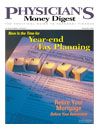Publication
Article
Physician's Money Digest
Capitalize on China's Great Opportunities
Author(s):
Fortune
To many Americans, Chinais alluring and mysterious,with intriguing cultureand customs steepedin tradition. Many physician-investors are also interested in thedynamic economic growth of China.According to an article in ,capitalizing on China's potential ismore difficult than it looks because aconnection does not always existbetween the economic growth of eachcountry and their stock markets.
China's Current Market
In 2003, indexes on China's stockmarkets nearly doubled but fell considerablyin 2004 following Beijing's concertedefforts to slow the country'seconomy. In addition, China's IPOmarket, which had been extremelyactive in 2003, slowed to a crawl in2004. Still, strategists and fund managersare big believers in the countrylong term because of the opportunitiespresented in China. Zachary Karabell,a fund manager with Fred AlgerManagement's new China-US GrowthFund, says that certain dominantthemes shape each decade. In the1990s, it was technology, but Chinawill be the transforming factor of thecurrent decade.
Fortune
Another reason to be bullish regardingChina is the timing. With manyinvestors pulling out, it does seem rightto strike. According to , newmoney flowing into China's 22 regionfunds increased 9-fold in 2003 whenthe major China indexes were climbing.Since the markets started decliningearly in 2004, negative flows wererecorded for four consecutive months.
Best Investing Routes
If you're considering investing inChina, you can choose from three categoriesof stocks. The first are red chips,Hong Kong-based companies inwhich mainland China entities are significantshareholders. H-shares, mainlandChina companies listed on theHong Kong Stock Exchange, are thesecond option for physician-investors,and N-shares are Chinese companieslisted on the New York Stock Exchange.Be aware, however, that Asiantickers use numbers instead of letters.
Fortune
The article suggests that thebest approach to investing in China isthrough a specialized mutual fund,especially one with a broad portfoliothat includes companies outside themainland. Also keep in mind that theexpense ratio of the average Chinafund is 2.4% in comparison to 1.5%for the average US equity fund.
Some top-performing funds includeDreyfus Premier Greater China, whichcarries a front-end load of 5.75% andan expense ratio of 2.25%. Over thepast 5 years, it has delivered an annualizedreturn of better than 13%.Matthews China, with a relatively reasonableexpense ratio of 1.71%, hasan annualized return of 18% over thepast 3 years.
If you would prefer to take asomewhat more indirect approach tothese markets, you should considerMerrill Lynch Global Small Cap,which includes Chinese stocks asonly one part of a diversified emerging-market strategy. This fund has afront-end load of 5.25% and a 10-year annualized return of 9.8%. Ifyou are looking for a less expensive,nonactively managed fund, BarclaysGlobal Investors exchange-tradedfund, called the iShares FTSE/XinhuaChina 25 Fund, is linked to an indexof liquid, large cap stocks of mainlandcompanies, and lists on the NewYork Stock Exchange with an expenseratio of 0.74%.
The sheer size and scope of China'sstock markets make it nearly impossiblefor physician-investors to ignore.The key is to proceed cautiously andthink long term.
